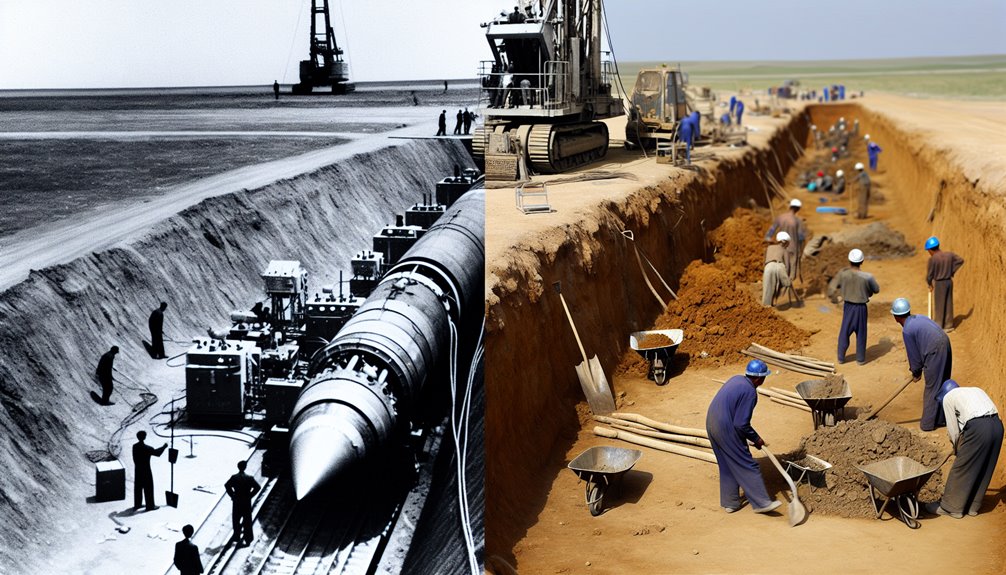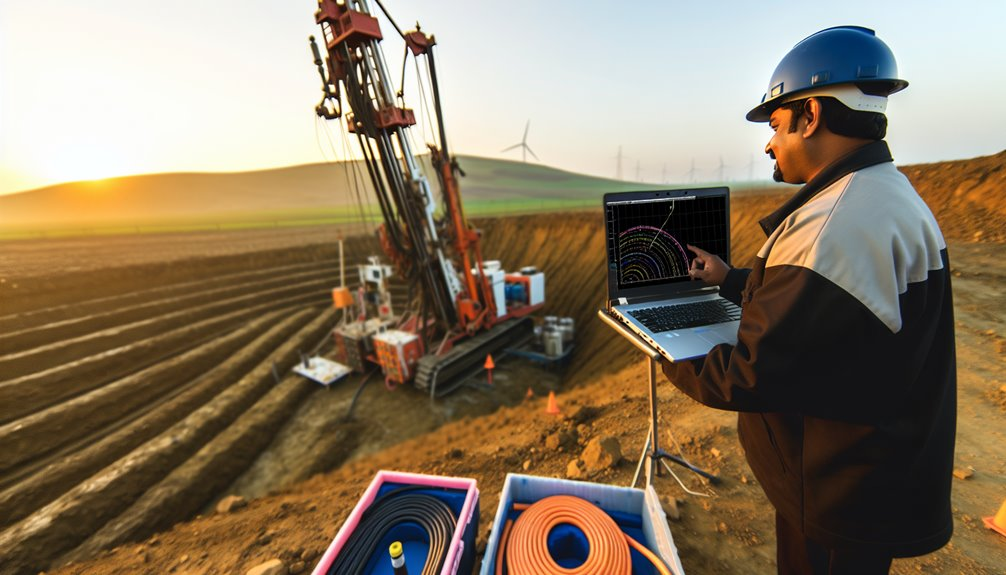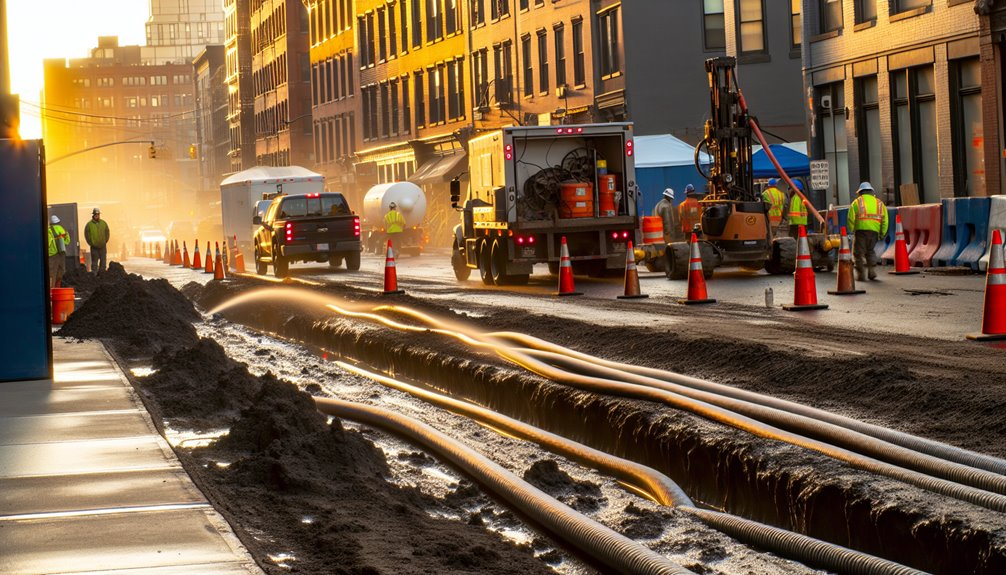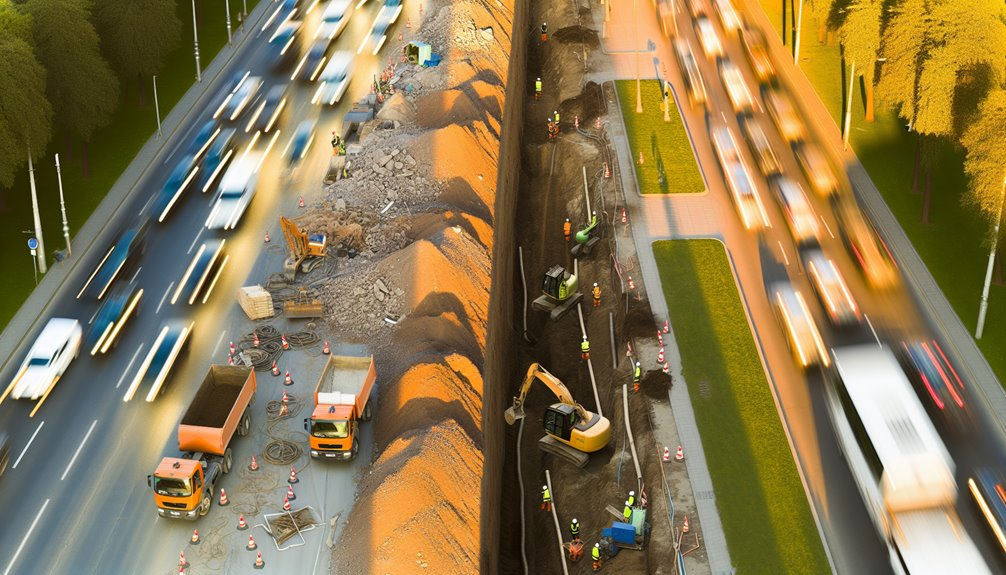When you're weighing the options between a missile boring contractor and traditional excavation for your upcoming project, you're fundamentally comparing efficiency against precision. Missile boring, leveraging guided technology, allows for quick, less invasive underground installations, markedly reducing surface disturbances and environmental footprint. On the other hand, traditional excavation offers unmatched precision, vital for complex projects but often at the expense of increased disruption and higher costs, especially in difficult terrains. Consider how these factors align with your project's demands and environmental commitments. What's your priority: speed or specificity?
Understanding Missile Boring and How It Works
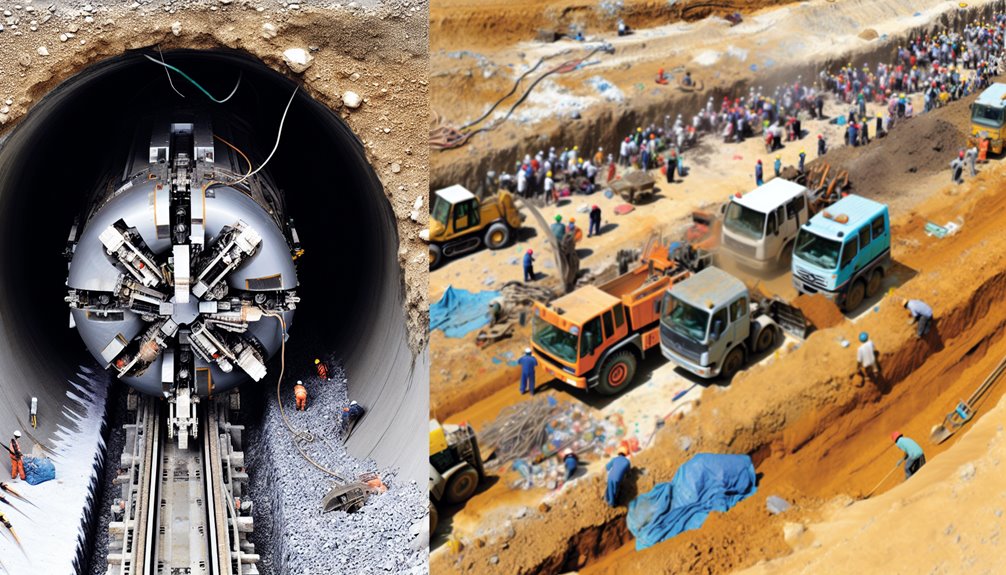
Missile boring, a trenchless method for underground installations, revolutionizes how utilities like water, gas, and electrical conduits are laid. You'll find its applications extend to setting up phone and cable lines, irrigation systems, and even complex installations like outdoor lighting and security systems. This method shines particularly in densely populated or sensitive areas where traditional excavation methods falter due to space constraints or potential damage to existing infrastructure. Its installation techniques involve a precise point-to-point underground boring approach that minimizes surface disruption and environmental impact. Utilizing a pneumatically driven missile, this method allows for quick, accurate, and cost-efficient installations under varied terrain, avoiding the extensive preparatory work and restoration required by conventional methods, making it an indispensable tool in modern urban utility expansion and maintenance. The capability to perform boring in any type of soil makes missile boring versatile and practical for various project requirements.
The Basics of Traditional Excavation Techniques
Traditional excavation techniques, while more disruptive than trenchless methods, play an essential role in utility installation and infrastructure projects.
Trench excavation, for instance, demands meticulous excavation planning to avoid impacting existing structures and to guarantee trench safety. This method provides unparalleled access and visibility, vital for precise installations and repairs.
Similarly, strip excavation, often employed in large-scale soil removal, requires both manual and mechanical methods to uncover underlying structures effectively.
Topsoil removal and sloping techniques focus on preventing soil collapse by establishing stable slopes, adhering to local soil regulations.
Meanwhile, shoring and benching are indispensable for deep excavations, where they provide necessary support to prevent trench collapse, securing a safer work environment under challenging conditions. These techniques utilize various equipment, including excavators and backhoes, to enhance operational efficiency and safety.
Evaluating the Environmental Impact of Each Method
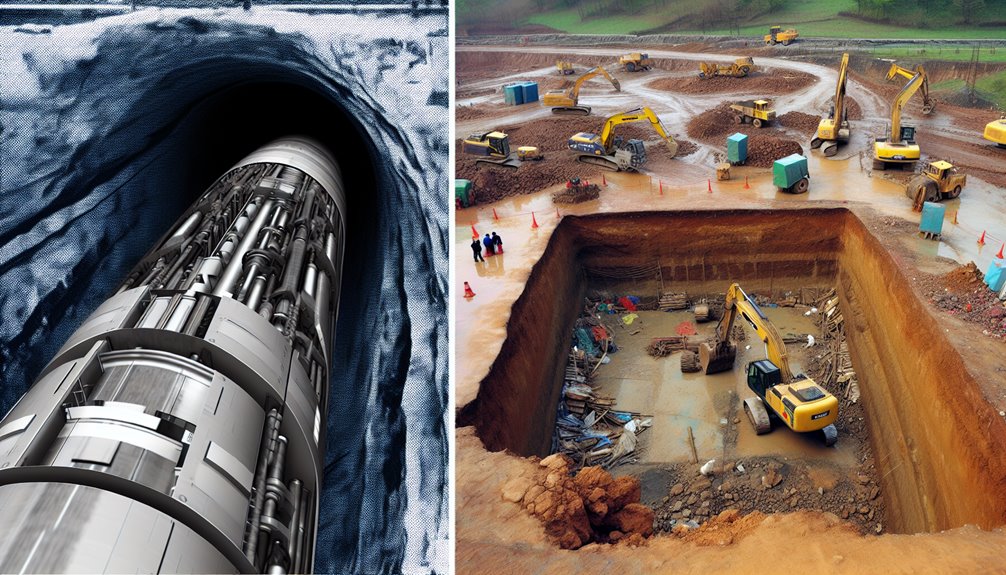
While traditional excavation methods have long provided necessary support and access for utility installations and repairs, their environmental impacts are significant and varied, ranging from air and water pollution to soil and biological disturbances.
In contrast, missile boring offers considerable ecological benefits that align with modern sustainability practices. Here's how:
- Air Quality: Missile boring minimizes air pollutants, preserving surrounding air quality and reducing health risks.
- Water Resources: This method avoids disrupting water tables and reduces the potential for water pollution.
- Soil and Geology: Less soil disruption means maintaining the integrity of subterranean ecosystems.
- Biological Resources: Missile boring prevents extensive habitat destruction, protecting biodiversity effectively.
These advantages make missile boring a compelling choice for environmentally conscious projects.
Cost Analysis: Comparing Missile Boring and Traditional Excavation
Delving into the financial aspects of missile boring compared to traditional excavation methods reveals several critical cost considerations that can influence a project's budget.
With missile boring, you'll find lower equipment costs and no need for specialized machinery, boosting cost efficiency. Additionally, the faster completion times considerably reduce labor expenses and increase operational efficiency.
In contrast, traditional excavation often involves more readily available trenching equipment, which may seem advantageous. However, the costs escalate with larger machinery needs and complex labor inputs, especially in hard-to-reach or geologically challenging areas.
This analysis underscores that while missile boring presents an upfront advantage in machinery availability and overall cost savings, the specific project requirements and site conditions will ultimately guide your decision on the ideal excavation method.
Choosing the Right Excavation Method for Different Terrain Types
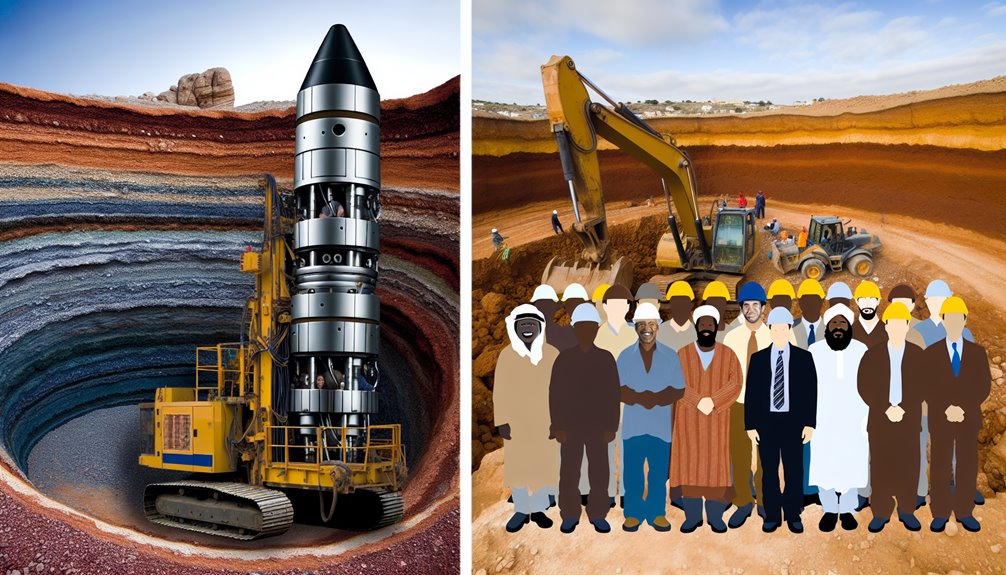
Having explored the cost implications of different excavation methods, let's now focus on selecting the appropriate technique based on various terrain types.
Understanding terrain challenges and ensuring excavation safety are paramount. Here's how you can match methods to terrain:
- Soft or Stable Soil: Opt for topsoil, earth, or trench excavation to efficiently manage these less challenging landscapes.
- Rocky or Hard Terrain: Engage in rock or slope excavation, utilizing specialized equipment like drills or explosives to tackle the hardness effectively.
- Waterlogged or Mucky Terrain: Consider muck excavation or dredging, focusing on moisture management and using techniques that prevent structural compromise.
- Sloping or Unstable Terrain: Employ slope stabilization strategies, including geotechnical measures, to maintain safety and integrity.
Conclusion
When deciding between missile boring and traditional excavation, assess your project's specific needs. Missile boring is quicker and disrupts less, ideal for sensitive ecological zones and tight deadlines. However, traditional excavation offers precise control in complex environments, despite its higher cost and greater environmental footprint. Analyze terrain, cost implications, and ecological impact carefully to determine the best method. Your choice will greatly influence both the efficiency and sustainability of your project's outcome.
If you're looking for more information to help guide your decision, I invite you to visit Boring Bros at boringbro.com or give us a call at (954) 639-6167. We're here to help you navigate through your options in a friendly and informative way. Your project's success is important to us, and we'd love to assist you further!

